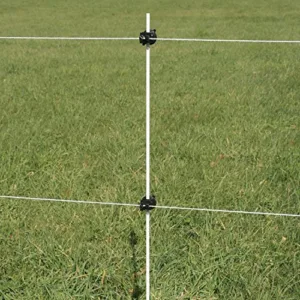Introduction
When it comes to setting up electric fencing, selecting the right components is crucial for its effectiveness and longevity. Two primary choices for supporting your electric fence are fiberglass rods and steel posts. In this article, Unicomposite composite profiles will delve into the intricacies of both options, comparing their durability, conductivity, installation, cost, and environmental impact. By the end, you’ll have a better understanding of which one suits your electric fencing needs best.

fiberglass rods for electric fence
Understanding Electric Fencing
Electric fencing is a modern and effective method for containing livestock, deterring wildlife, or safeguarding your property. It relies on low-voltage electric pulses to create a psychological barrier, rather than a physical one, making it a humane choice. To set up an electric fence, you need durable and reliable support structures, such as fiberglass rods or steel posts.
Benefits of Electric Fencing
Before we dive into the comparison, let’s highlight the benefits of electric fencing:
- Enhanced security
- Lower construction costs
- Reduced maintenance
- Customizable to different needs
- Minimal harm to animals and wildlife
Components of Electric Fencing
To create a robust electric fence, you need the right materials. Two common options for support structures are fiberglass rods and steel posts.
Steel Posts
Steel posts are traditional and sturdy. They have been the go-to choice for electric fencing for many years. They offer excellent stability and durability. However, they come with some downsides, as we’ll explore in the following sections.
Fiberglass Rods
Fiberglass rods are a newer alternative to steel posts. They are lightweight, flexible, and resistant to rust and corrosion. This makes them a compelling choice for some users, but they also have their drawbacks.
Comparison of Fiberglass Rods and Steel Posts
Durability
Steel posts are known for their durability and longevity. They can withstand harsh weather conditions, heavy impact, and are difficult to break. Fiberglass rods are durable but can break under extreme pressure or weather conditions.
Conductivity
Steel posts are excellent conductors of electricity, ensuring consistent shock delivery. On the other hand, fiberglass rods are less conductive and may require additional grounding to be as effective.
Installation
Steel posts require more effort and time to install due to their weight and rigidity. In contrast, fiberglass rods are lightweight and easy to install, reducing labor costs.
Cost
Steel posts are more cost-effective initially, but fiberglass rods can be cheaper in the long run due to their lower maintenance and installation costs.
Pros of Using Fiberglass Rods
- Lightweight and easy to handle
- Resistant to rust and corrosion
- Cost-effective in the long term
- Suitable for temporary fencing
Pros of Using Steel Posts
- Proven durability
- Excellent electrical conductivity
- Stable in various weather conditions
- Long-lasting investment
Cons of Using Fiberglass Rods
- Breakable under extreme conditions
- Less conductive
- May require additional grounding
Cons of Using Steel Posts
- Heavier and harder to install
- Prone to rust and corrosion
- Higher initial installation costs
Which One is More Environmentally Friendly?
Fiberglass rods are generally considered more environmentally friendly due to their resistance to rust and corrosion, which reduces the need for replacements and maintenance.
Maintenance
Fiberglass rods require minimal maintenance, while steel posts may need periodic checks and rust prevention measures.
Choosing the Right Option for You
The choice between fiberglass rods and steel posts depends on your specific needs, budget, and the intended lifespan of your electric fence. Assess your priorities and consult with a professional if needed.
Safety Considerations
Regardless of your choice, always prioritize safety. Proper grounding and maintenance are key to ensuring your electric fence functions safely and effectively.
Conclusion
In the world of electric fencing, the choice between fiberglass rods and steel posts is not one-size-fits-all. Both have their strengths and weaknesses, and the decision should be based on your unique circumstances. Consider your budget, the intended purpose of the fence, and your environmental concerns when making this choice.
FAQs
- Are fiberglass rods more cost-effective than steel posts in the long run?
- In many cases, yes. While steel posts may be cheaper initially, the lower maintenance and installation costs of fiberglass rods often make them more cost-effective over time.
- Do fiberglass rods break easily under pressure?
- Fiberglass rods are durable but can break under extreme pressure. Steel posts are generally more robust in this regard.
- Which option is better for temporary fencing?
- Fiberglass rods are a good choice for temporary fencing due to their lightweight and easy installation.
- Do steel posts require more maintenance than fiberglass rods?
- Yes, steel posts may require more maintenance to prevent rust and corrosion, while fiberglass rods require minimal upkeep.
- How do I ensure the safety of my electric fence regardless of the support structure I choose?
- Safety is paramount. Ensure proper grounding, regular maintenance, and follow safety guidelines to keep your electric fence secure and effective.
 info@unicomposite.com
info@unicomposite.com


























